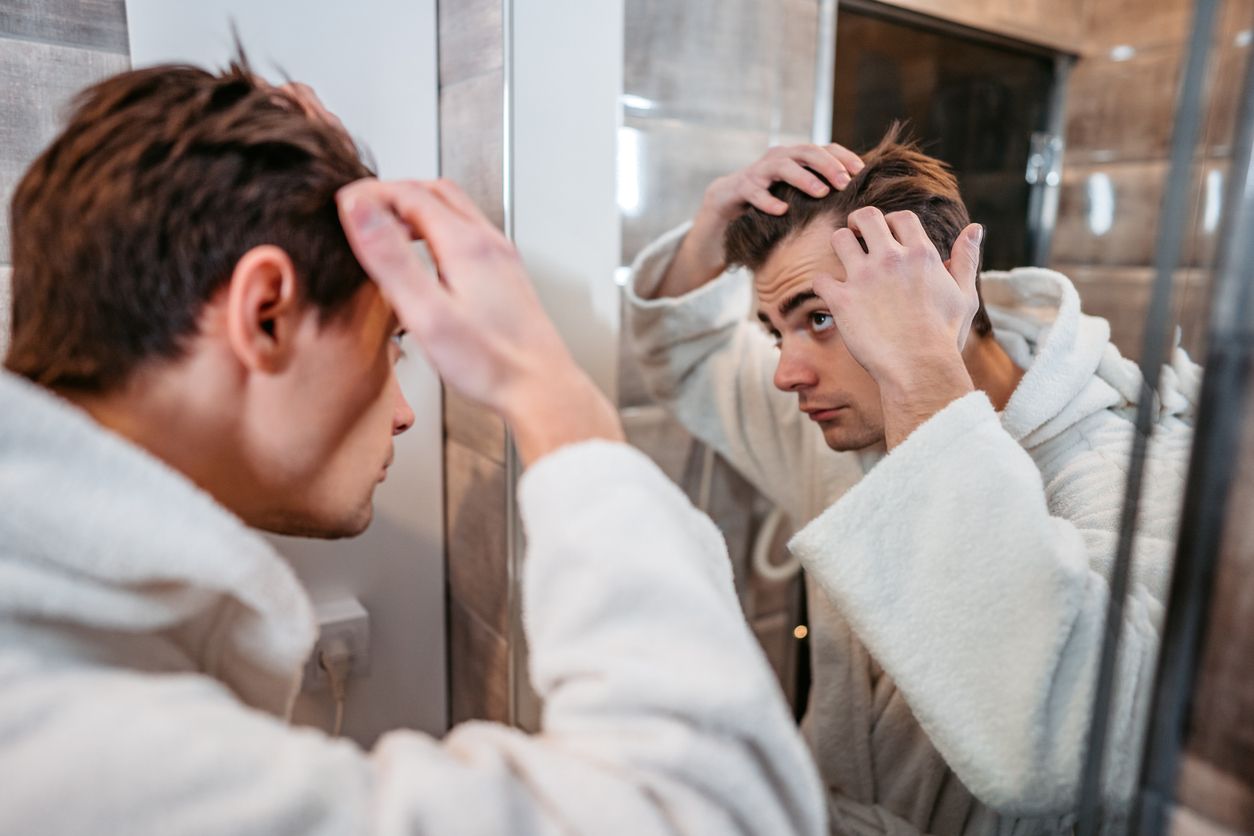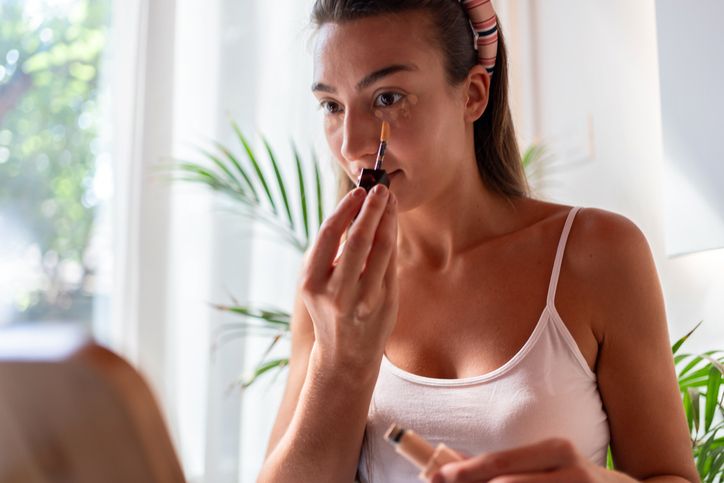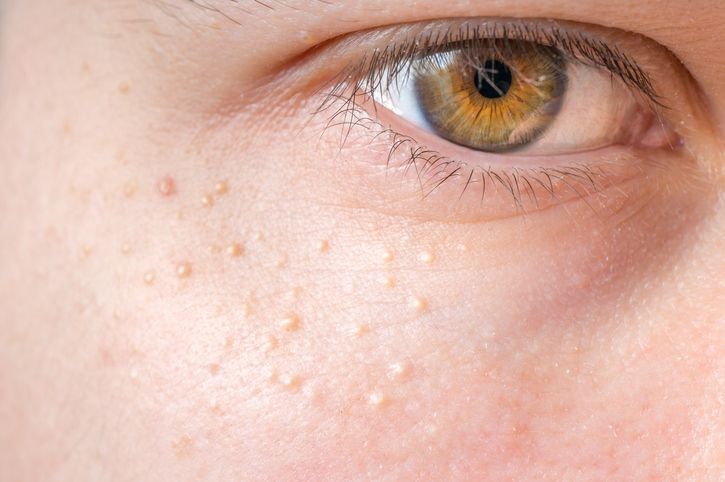- Home
- Trend
- Weight Loss Strategies
- Acne Tips
- Hair Health Information
- Blemish Removal Tips
- Acne Scar Removal Tips
- Muscle Building Techniques
- Intimate Care Tips
- Postpartum Intimate Care
- Eye Bags Wiki
- Tips for Face Slimming
- Secret of Permanent Hair Removal
- Breast Enlargement Tips
- Cure to Snoring
- Marionette Lines
- Skin-Tightening Secrets
Hair loss is more than just a cosmetic issue—it’s often a sign of deeper health concerns. Many people notice thinning hair but overlook the early warnings their scalp provides. Hair follicles go through a delicate cycle, and any disruption can lead to hair shedding or even permanent loss.
Hair Loss Red Flags: Early Signs You Shouldn’t Ignore

Hair loss doesn’t happen overnight—it’s often a gradual process with early warning signs that many people overlook. Hair follicles go through a natural growth cycle, but when this cycle is disrupted, it can lead to hair thinning, excessive hair shedding, or even permanent loss.
There are several types of hair loss, each requiring specific treatment options. While some cases result from hereditary hair loss, others stem from hormonal imbalances, medical conditions, or even external factors like stress and diet.
Hormonal Imbalances & Androgenetic Alopecia: Conditions such as male pattern baldness, female pattern baldness, pregnancy, and birth control pills can trigger hormonal shifts that weaken hair follicles.
Autoimmune Diseases: Disorders like alopecia areata cause the immune system to mistakenly attack healthy hair follicles, leading to patchy hair loss.
Underlying Medical Conditions: Thyroid disorders, high blood pressure, and hormonal changes can contribute to further hair loss.
Lifestyle & Medication Side Effects: Oral contraceptives, blood thinners, and stress-induced telogen effluvium can push more hair into the shedding phase, accelerating hair thinning.
Warning Signs Your Hair Regrowth Is at Risk
If you notice any of the following symptoms, it’s crucial to take action before hair density decreases further.
Itching or Scalp Irritation – Persistent itching or discomfort may indicate inflammation that weakens hair follicles, affecting new hair growth.
Increased Shedding Phase – If you’re seeing excessive hair fall on your pillow, in the shower, or on your hairbrush, this could be a sign that the anagen phase (growth phase) is being disrupted.
Receding Hairline – More commonly associated with male pattern hair loss, but female pattern hair loss can also lead to thinning around the temples.
Patchy Hair Loss – A telltale sign of alopecia areata, where the immune system attacks hair follicles, leading to sudden, round bald patches.
The Surprising Daily Habits That Are Sabotaging Your Hair
Many people assume that hair loss is purely genetic, but everyday habits often accelerate hair thinning, worsen male pattern hair loss, and trigger female pattern baldness. While hereditary hair loss is inevitable for some, neglecting scalp health and lifestyle factors can make things worse. Here are some surprising ways you might be damaging your hair follicles—and what you can do to promote hair regrowth.
1. Overwashing & Harsh Shampoos
Washing your hair too frequently, especially with shampoos containing sulfates and harsh detergents, can strip the scalp of natural oils. These oils are essential for hair shaft protection and new hair growth. Without them, the scalp becomes dry, leading to scalp irritation and increased hair shedding.
What to Do Instead:
• Wash hair 2-3 times a week with a gentle, sulfate-free shampoo.
• Avoid using hot water, as it can dry out the scalp.
• Use a hydrating conditioner to maintain moisture balance.
2. Poor Diet & Nutritional Deficiencies
Your hair is directly affected by your diet. A lack of essential nutrients—particularly iron, biotin, zinc, and protein—can weaken the hair shaft, slow hair growth, and cause further hair loss. Iron deficiency anemia is a common cause of female pattern hair loss, while low protein intake affects keratin production, the building block of hair.
What to Do Instead:
• Eat iron-rich foods like spinach, lentils, and red meat.
• Include biotin-rich foods such as eggs, nuts, and avocados.
• Stay hydrated—dehydration affects blood circulation, which is crucial for increasing blood flow to hair follicles.
3. Heat Styling & Chemical Treatments
Regular use of flat irons, curling wands, and blow dryers weakens hair structure. High temperatures cause water molecules within the hair shaft to evaporate, making it brittle and prone to breakage. Similarly, chemical dyes, relaxers, and perms damage the cuticle layer, leading to hair thinning.
What to Do Instead:
• Limit heat styling to once or twice a week.
• Always use a heat protectant spray before styling.
• Opt for natural hair colors and gentler, ammonia-free dyes.
4. Stress & Hormonal Changes
Emotional stress is a leading cause of telogen effluvium, a condition where stress hormones push more hair follicles into the resting phase instead of the anagen phase (growth phase). This results in increased hair shedding and reduced hair density. Hormonal changes from pregnancy, menopause, birth control pills, and thyroid disorders also disrupt hair growth.
What to Do Instead:
• Practice stress management techniques such as yoga, meditation, or deep breathing.
• Ensure proper hormone balance by consulting a doctor if experiencing hormonal imbalances.
• Prioritize quality sleep to allow the body to repair and promote new hair growth.
5. Medications & Medical Conditions
Certain prescription medications, including blood thinners, oral contraceptives, and high blood pressure treatments, can lead to hair shedding. Conditions like autoimmune diseases, androgenetic alopecia, and thyroid disorders can also slow hair loss treatment progress.
What to Do Instead:
• If experiencing sudden hair falls, discuss medication side effects with your doctor.
• Undergo blood tests to check for underlying diseases that may be affecting hair health.
• Consider medical treatment options such as light therapy, platelet-rich plasma (PRP), or laser therapy to support hair regrowth.
6. Tight Hairstyles & Over-Brushing
Constantly wearing tight ponytails, braids, or buns puts excessive tension on the scalp, leading to traction alopecia, a type of patchy hair loss caused by stress on hair follicles. Over-brushing or using the wrong brush can also cause hair breakage and scalp irritation.
What to Do Instead:
• Avoid overly tight hairstyles that put strain on the scalp.
• Use a wide-tooth comb to prevent tugging and broken hair.
• Let your hair down regularly to reduce stress on the hair shaft.
免費體驗
F8 Hair Regrowth Treatment
1 Minute Self-Registration
Date should not be before minimal date
The 90-Day Hair Rescue Plan: What You Can Do Today for Visible Results

If you’re dealing with hair thinning, the good news is that structured, science-backed approaches can lead to visible hair regrowth in just a few months. The 90-Day Hair Rescue Plan is designed to reset your scalp, reactivate dormant hair follicles, and encourage new hair growth, helping you regain hair density and confidence.
Phase 1: Scalp Reset (Weeks 1-4)
The first step in your hair loss treatment journey is creating a healthy scalp environment. Many cases of male pattern baldness, female pattern hair loss, and telogen effluvium worsen due to clogged hair follicles, excess oil, and scalp irritation.
To begin, switch to sulfate-free hair products that cleanse without stripping away natural oils. Harsh shampoos often cause scalp dryness and inflammation, leading to increased hair shedding. A gentle detox using medical-grade or botanical formulas can help clear dead skin buildup, allowing your hair follicles to breathe.
In addition to changing your hair care routine, start incorporating daily scalp massages. Massaging the scalp for at least five minutes a day stimulates blood flow, ensuring essential nutrients reach weak or dormant follicles. This simple habit can significantly boost the anagen phase, where new hair grows actively.
Lastly, avoid heat styling and chemical treatments, which weaken the hair shaft and contribute to further hair loss. Excessive use of flat irons, curling wands, and hair dyes can lead to breakage and scalp irritation, making it harder for hair regrowth to occur.
Phase 2: Boost Hair Follicle Activity (Weeks 5-8)
Once your scalp is in better condition, it’s time to stimulate hair follicle activity and strengthen your strands from the inside out. At this stage, many people with androgenetic alopecia or patchy hair loss notice slower hair growth due to insufficient scalp circulation and hormonal imbalances.
One of the most effective ways to reactivate dormant follicles is laser therapy or light therapy. Treatments like F8 Hair Regrowth Treatment use low-energy laser beams to increase blood flow, delivering oxygen and nutrients to weakened hair follicles. This process supports hair density improvements while preventing further hair loss.
A nutrient-rich diet is also crucial in this phase. Increase your intake of protein, iron, and biotin, which are essential for stronger hair shafts and reduced shedding. Deficiencies in these nutrients often lead to slow hair loss recovery and weaker regrowth. Foods like eggs, lean meats, nuts, and leafy greens provide the necessary building blocks for healthy hair growth.
Phase 3: Lock In New Hair Growth (Weeks 9-12)
As you enter the final phase of your hair loss treatment journey, consistency is key. Many people experiencing male pattern hair loss, female pattern baldness, or alopecia areata see significant improvement when they maintain healthy scalp and hair care habits.
At this stage, professional treatments like F8 Hair Regrowth Treatment can provide additional support in locking in new hair growth. This non-invasive, painless treatment not only helps treat female pattern baldness and androgenic alopecia, but it also prevents further hair loss by strengthening hair follicles and improving scalp circulation. Since it’s suitable for all hair types and requires no downtime, it’s an excellent long-term solution for those looking to grow stronger, healthier hair.
F8 Hair Regrowth Treatment: The Science-Backed Answer to Hair Loss

You may see F8 Hair Regrowth Treatment mentioned in the plan, but what exactly does it offer? This treatment offers a medical-grade, non-invasive approach that combines low-energy laser therapy with a nutrient-rich growth serum, helping to reactivate hair follicles and promote new hair growth, making this the best treatment choice for your 90 day hair regrowth plan.
F8 Hair Regrowth Treatment is designed to target multiple causes of hair loss, from androgenetic alopecia to patchy hair loss caused by autoimmune diseases. The treatment follows a systematic approach to treat hair loss effectively:
Deep Scalp Cleansing
A clean, healthy scalp is the foundation for stronger hair growth. This step removes excess oil, dirt, and dead skin cells that clog hair follicles and contribute to scalp irritation. A congested scalp environment can block blood flow, preventing hair shafts from receiving essential nutrients.
• Clears dandruff buildup and sebum accumulation
• Reduces scalp inflammation and irritation
• Creates an ideal environment for new hair growth
Laser Therapy for Hair Follicle Activation
Low-energy laser beams penetrate the scalp to increase blood flow and stimulate dormant hair follicles. This light therapy works at a cellular level to extend the anagen phase (growth phase) and slow hair shedding.
• Enhances circulation to the scalp, delivering more oxygen and nutrients
• Reactivates weakened follicles to support hair density
• Encourages stronger, healthier hair growth
Nutrient-Rich Hair Growth Serum
F8 Hair Regrowth Treatment includes a medical-grade serum designed to nourish hair follicles and support hair regrowth. This specialized formula contains essential vitamins, peptides, and growth factors to combat hair thinning and promote thicker, fuller hair.
• Strengthens hair shafts and prevents breakage
• Supports scalp hydration to reduce dryness and irritation
• Provides targeted nutrition to weakened hair follicles
Long-Lasting Results Without Side Effects
Unlike surgical procedures such as hair transplants, F8 Hair Regrowth Treatment is a non-invasive alternative that delivers sustainable hair regrowth without scarring, discomfort, or long recovery times. By addressing the cause of hair loss at its root, this treatment helps prevent further hair loss and restore hair density over time.
• No prescription medication or oral contraceptives required
• Safe for those with hormonal imbalances, high blood pressure, or thyroid disorders
• Suitable for individuals experiencing male pattern baldness, female pattern hair loss, or telogen effluvium
Why Choose F8 Hair Regrowth Treatment?
F8 Hair Regrowth Treatment stands out among treatment options for its scientifically backed approach and customized scalp care.
✔ Non-Invasive & Painless
Unlike surgical procedures such as hair transplants, F8 uses low-energy laser therapy and topical solutions to treat thinning hair without discomfort.
✔ Suitable for All Hair Types
Whether dealing with male pattern baldness, female pattern baldness, androgenic alopecia, or patchy hair loss, this treatment adapts to different hair loss conditions and scalp types.
✔ No Downtime Required
Since F8 is a non-surgical treatment, clients can resume their daily activities immediately after treatment begins. There’s no need for recovery periods, bandages, or medication.
Last Few Words
Although F8 Hair Regrowth Treatment can be helpful, be sure to track progress for your 90 days plan. Take weekly photos of your scalp and receding hairline to monitor new hair growth. Many people struggling with hereditary hair loss or thinning hair don’t notice improvements right away, but side-by-side comparisons reveal subtle yet positive changes over time.
If you’re ready to take control of hair loss and achieve visible results, book a consultation for F8 Hair Regrowth Treatment today. It’s time to restore your hair’s natural strength and confidence—starting now.
[ Link ] Please update text and href.免費體驗
F8 Hair Regrowth Treatment
1 Minute Self-Registration
Date should not be before minimal date
FAQ

1. Why do some people lose hair at an early age while others don’t?
Hair loss can be influenced by multiple factors, including family history, hormonal imbalances, and lifestyle choices. If you have a family history of male pattern baldness or female pattern hair loss, you may lose hair earlier due to hereditary hair loss. Other contributing factors include stress, nutritional deficiencies, and underlying medical conditions such as thyroid disorders.
2. Can unwanted hair growth be a sign of a hair loss condition?
Yes, unwanted hair growth in certain areas while experiencing thinning hair elsewhere may indicate hormonal imbalances. Conditions like polycystic ovary syndrome (PCOS) can cause excessive hair growth on the face or body while leading to hair thinning on the scalp. Consulting a specialist can help identify the cause and find appropriate treatment options.
3. Does scar tissue from injuries or surgeries affect growing hair?
Yes, scar tissue can prevent growing hair in affected areas. When the scalp experiences deep wounds, burns, or surgeries, the hair follicles in that region may become permanently damaged, leading to patchy hair loss. In some cases, advanced treatments like platelet-rich plasma (PRP) therapy or hair transplant procedures may help restore hair in scarred areas.
4. Does breastfeeding cause hair loss or increase the risk of thinning hair?
During breastfeeding, many women experience increased hair shedding due to postpartum hormonal changes. This condition, known as telogen effluvium, is temporary and usually resolves within a few months. However, if hair loss persists, underlying factors like nutritional deficiencies or stress could be contributing to the issue. Maintaining a healthy diet rich in essential vitamins can help prevent hair loss after pregnancy.
5. Can taking broken tablets of certain medications lead to hair loss?
Some prescription medications, including blood thinners, birth control pills, and medications for high blood pressure, can contribute to losing hair as a side effect. Taking broken tablets of medications that are not designed to be split may alter their absorption, potentially increasing the risk of side effects, including hair shedding. Always consult a doctor before modifying or stopping any medication to avoid increased risk of health complications.









